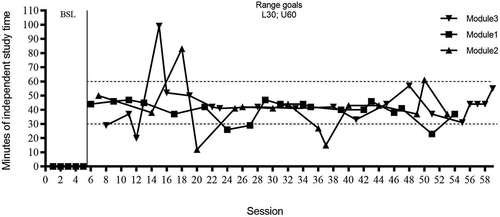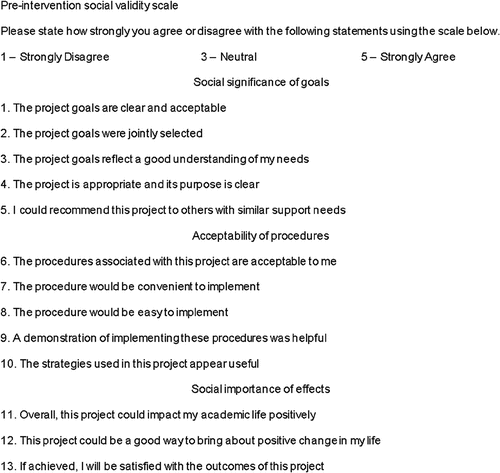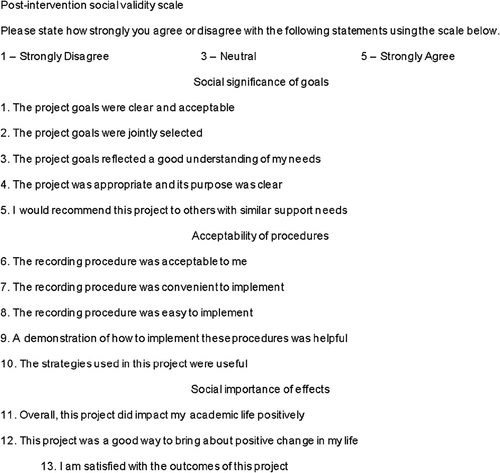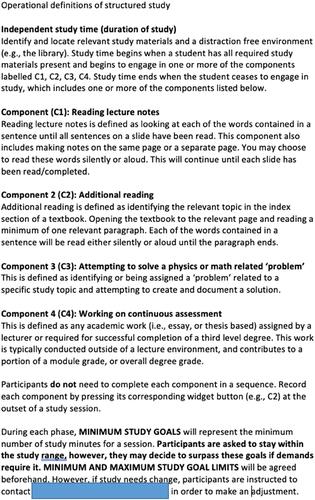Figures & data
Table 1. Outline of study phases. Actual times in minutes for phases 1–4 were tailored to the individual based on their baseline behaviors as well as the study time goal set.
Table 2. Interview responses for each participant. Questions 1–7 involved a rating of agreement from 1 to 5 with an option to make a comment. Questions 8 and 9 were open-ended questions.
Figure 1. Session by session data for P1 indicating number of minutes of independent study duration. Baseline (BSL) and study phases are indicated by the vertical lines and upper (U) and lower (L) bounds of the range criterion are indicated by the broken horizontal lines. Baseline began in mid-February with the intervention running until its conclusion in mid-April.
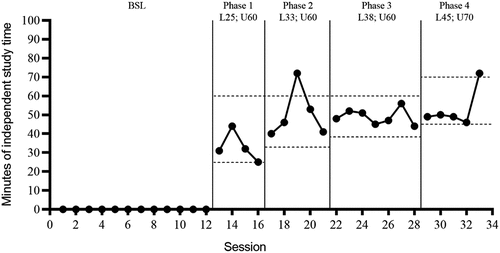
Figure 2. Session by session data for P2 indicating number of minutes of independent study duration. Baseline (BSL) and study phases are indicated by the vertical lines and upper (U) and lower (L) bounds of the range criterion are indicated by the broken horizontal lines. Baseline began in mid-February with the intervention running until its conclusion in mid-April.
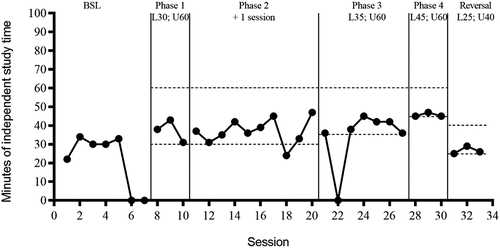
Figure 3. Generalisation data for P1 shows number of minutes of independent study duration across three differing modules. Upper and lower bounds of the range criterion are indicated by broken horizontal lines. Generalisation coincided and complemented revision time; mid-April to mid-May.

Figure 4. Generalisation data for P2 shows number of minutes of independent study duration across three differing modules. Upper and lower bounds for range criterion are indicated by the broken horizontal lines. Generalisation coincided and complemented revision time; mid-April to mid-May.
